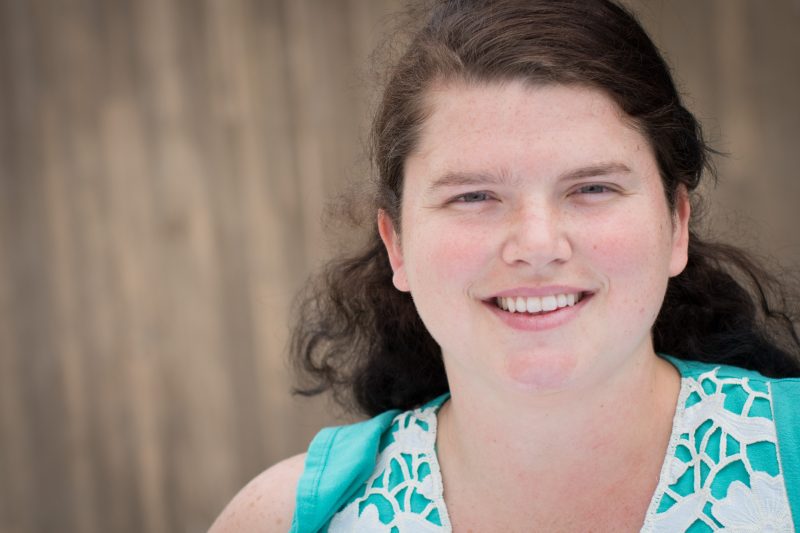A doctoral student in the School of Natural Sciences & Mathematics at UT Dallas, Audrey Hammack’s research with Dr. Bruce Gnade is shedding light on neural networks in the brain. With an internship at Qorvo, her current project with microelectrode arrays (MEAs) aims to answer questions that can potentially assist patients with brain damage or non-networking neurons. Audrey, who serves as the Chair for the AVS, spent time to share this technology and her research with us, as well as give insight to incoming students.
What do you find most enjoyable about your research focus?
The fact that it has the capability to expand knowledge about the brain and potentially help many people further down the road. My project is about adding novel functionality to microelectrode arrays (MEAs), a tool that has long been used to record electrical activity of neurons in vitro. One of the interesting things that I’m doing is adding organic light-emitting diodes (OLEDs) to the array, so I can optically stimulate a culture of cells and then record the stimulated response. How does the stimulated response look from tissue from different parts of the brain? How does the stimulated response differ in healthy versus diseased tissue? Those and other questions, which could be answered with this technology, could expand how much neuroscientists understand about neural networks. Recently, one of our collaborators asked if we could use polystyrene to build interesting 3D architectures on the surface of the MEA. The idea behind that is to impose a physical separation on neurons. The nature of neurons is to grow to each other and build electrically-active networks, but is the culture still electrically viable when there is a barrier that prevents or impedes networking?
The brain is endlessly fascinating to me. It’s the root of sensation and perception, consciousness, motor skills, language…and yet there’s so much about it that is not clearly understood. If my project can answer some of these questions about neural networks, then that’s more information that can be applied to understanding traumatic brain injury, improving prosthetics, treating mental illness, etc.
You are currently Chair for the AVS Science and Technology of Materials, Interfaces, and Processing student chapter in Dallas Fort Worth. How has your involvement helped you develop in your field?
I’ve actually been involved in AVS since 2014, first as a member-at-large, a low-ranking officer position that supports the higher ups, then as vice-chair, and now chair. It’s been a great opportunity to grow responsibility in something outside the lab.
Our organization focuses heavily on career planning/development for graduate students. To that end, we have invited a lot of guest speakers to talk candidly about the development of their career and the pros/cons of their career path. It’s been interesting to hear different opinions and points of view from people with experience in academia, industry, and national labs.
Where do you see your research taking you next?
In fabricating the devices I mentioned in question 1, I’ve gotten a lot of experience in the UTD Cleanroom, and I thought I’d try to apply what I’ve learned to real-world problems. I’m currently in the middle of an internship at Qorvo, a local semiconductor fab, where I’m working as a process engineer. It’s been a good experience to tackle a “real” problem and to see the level of interaction between the other engineers when it comes to problem-solving. I’ve enjoyed the projects that I’m working on, and I’d like to see myself growing in this field after graduation.
What advice would you give incoming researchers on balancing curriculum and student life?
For me, coming to the realization that I can’t accomplish everything in a single day was the first step. Science is done rather slowly and incrementally, with a lot of troubleshooting in between, so you need to keep yourself organized to stay focused on the big picture of what you’re trying to accomplish. Before I leave the lab, I make a to-do list for the next day; high-priority tasks go at the top of the list, so I tackle them earlier in the day and I’m less likely to procrastinate. Working on a weekend is inevitable, so accept that it’s part of the process, rather than fighting it. To keep myself motivated, I buy concert tickets a few months in advance and I try to see how much I can get accomplished before the big day rolls around.

